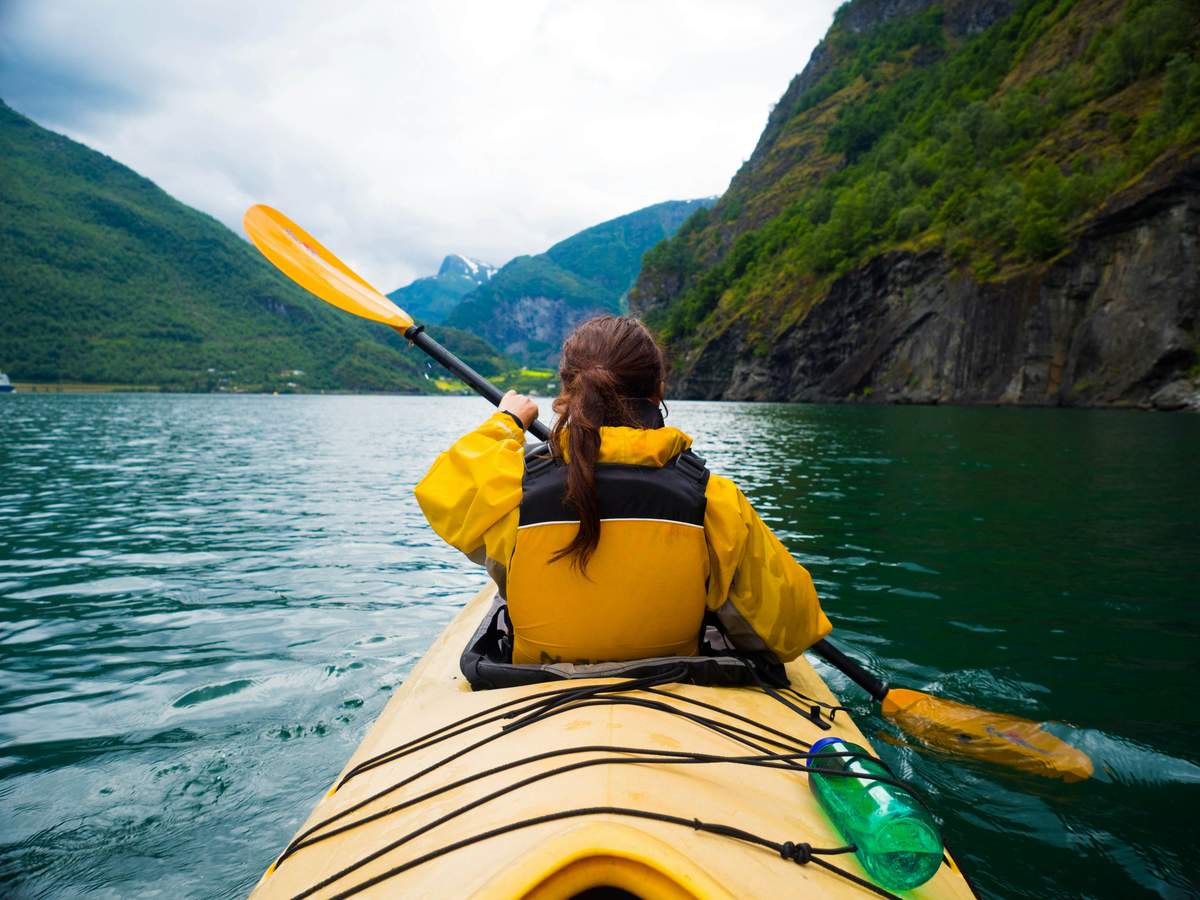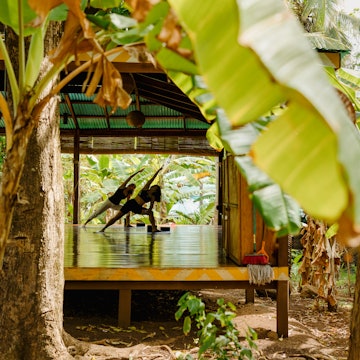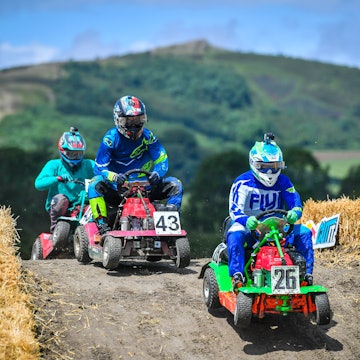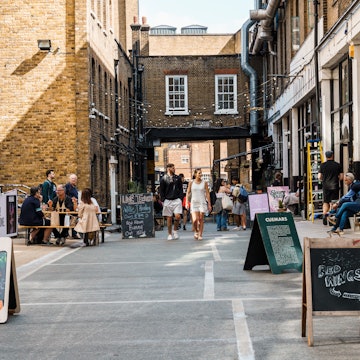
The Northern Way: a sailing adventure from Scotland to Norway
Sponsored by
Oct 13, 2020 • 8 min read

Bioluminescent algae cast splintering lacerations of light in the dark waters of the North Sea. Ahead, a gibbous moon paints the seascape in a subtle orange hue as cirrus clouds drift to reveal an almost touchable Milky Way, like Dali painted directly onto the night sky. A northerly gust fills the headsail of the expedition yacht Barba and the boat surges ahead into the waves.
“This is exactly what the Vikings would have experienced over 1,000 years ago,” says our captain, the Norwegian sailor, adventurer and marine biologist Andreas B. Heide. “We should see mainland Norway in a little over 24 hours now.”

The Journey North
Colonised by the Vikings in the 9th century, the 100 islands that make up the Shetland archipelago seem a fitting spot to embark on a Norse-style adventure with friends Matthew Robertson and Tom Neish from Momentum Life. A 12-hour drive from London, the islands that comprise the northernmost point of Great Britain are dramatically treeless, windswept and weather hardened, are are home to a little over 20,000 inhabitants.
Serpentine roads cut through the landscape as we roll through stone villages and farmland on our way to Lerwick, Shetland’s capital. Over the final crest, I look down into the harbour and spot the familiar shape of Barba rock gently at her mooring. Within, captain Heide prepares for the 34-hour voyage to come. But unlike his ancestors, he is leading a party of Brits across the North Sea to explore his homeland; a Viking voyage in reverse, if you will.
“Permission to come aboard?” I ask as Heide pokes his head out of the cockpit. “Permission granted,” he smiles.
Basking Sharks in Shetland
Marine life is abundant in the Shetland Islands, and Heide has spent many weeks exploring its coastal waters for transient orcas, who settle here to feed on seals between May and August. But there’s more here too; white-sided dolphins, minke, sperm and humpback whales to name just a few.
As Heide notes, “The strong currents in combination with a diverse topography, ranging from steep cliffs to sheltered bays, makes it a safe haven for a wide range of species.” And to our surprise, we receive word that basking sharks, the world’s second-largest fish, have been spotted a mere 30 minutes from harbour. So, with kit checks complete, briefings held and the crew ready to set sail, we cruise out of Lerwick harbour.
“I see dorsal fins,” cries Heide from the helm. Ahead, in a secluded bay, two adult basking sharks feed meditatively on zooplankton, the murky water concealing their enormous 6-meter, 5-ton mass. An expert diver and one who has led the planet’s leading filmmakers underwater to document marine life, Heide dons his wetsuit and enters the water. “I’ve never dived with basking sharks before,” he says as he pulls the hood over his head. “This is an amazing moment.”

Crossing the North Sea
40 minutes later Heide return to Barba. Though visibility was poor, he got within arm's reach of the sharks and marks this as an enormous success. But with the day fading and a 34-hour crossing to embark upon, he’s also anxious to begin the long sail across the North Sea to Norway. From our location near the coastal community of Quarff, we sail past the large island of Bressay and close to the 180-meter high cliffs of the Isle of Noss to witness one of Great Britain’s largest gannet colonies.
Looking up, the sky darkens under the weight of gannets and the air fills with the roar of wings echoing off cold rock. Before long, Heide signals that the time has come, and we all clamber into our specialist sailing gear – I'm using this voyage as an opportunity to test four of the pieces from the new Land and Sea Collection from Musto.
It’s 7pm and we have 200 nautical miles to sail before we see land again. Heide and I have sailed together before, so we agree on 3-hour watch rotations and settle into the routine of life aboard a sailing boat. With fair 12-knot north-westerly winds powering us across the sea, our pace is a steady 7-knots (13kph) and the conditions gentle, so fears of seasickness are at bay, for the time being at least. What consumes us is the deep mauve light of the setting sun over Shetland and the vast expanse of the open sea ahead. It is timeless to be on a sailing boat in open water, as if filled with a primitive sense of oneness and presence.

I take the first night watch and the crew rest. While Barba’s technology is state of the art, Heide highlights the importance of watching for both boats and debris in the water ahead. “A collision here could have catastrophic consequences,” he urges. No pressure then. Sitting alone on deck travelling at 7-knots with nothing but the open sea and my thoughts offers a moment of deep catharsis, and time surprisingly floats by. At midnight, Heide emerges to take over the next watch. As so continues our 3-hours on, 3-hours off rotation.
By 10am the following morning the conditions have changed. We’re churned back and forth by a swell in excess of 2-meters, with near gale force gusts of 28-knots that make us roll like ragdolls. Seasickness hits hard, and I'm grateful for my grippy, shock-absorbent boots and we can but hold on and wait the conditions out. Checking the wind forecast, Heide expects this to last for up to 4 hours; they are a long and tiring 4 hours.

It occurs to me that I am fortunate to be clad in Musto's Gortex and Primaloft Hybrid Jacket and Pro Series Trousers to keep me warm and dry during the tempest. I can’t help but wonder how the Vikings would have experienced all this, and much worse, back in 800AD, and I’m acutely aware of how insignificant we are on this small boat in the North Sea.
“I see a lighthouse,” bellows Heide from the helm 28 hours into our crossing. We emerge on deck and cheer. “Another 6 hours and we’ll be at our mooring location.”
With the conditions calm once again and the hope of landfall mere hours away, there’s a palpable hum of excitement onboard. By 5am we dock, our legs sway as we steady ourselves on land once again, and we all embrace. Heide notes this as one of the best North Sea crossings he’s ever had, and a celebratory beer completes this portion of our adventure.

Into the Fjords
With the lethargy of our crossing waning, and the heat of the late August sun warming our bones, we cast off from our mooring on the islands of Kvitsøy, Norway’s smallest municipality and one dotted with traditional fishing cabins. Heide says that it is one of the most popular vacation spots for summering Norwegians from the nearby town of Stavanger, and the children sailing and adults lapping up the morning sunshine are evidence of this.
We sail inland, past Stavanger, Norway’s fourth largest city and one made rich by the oil boom of the 1970s, and into Lysefjord. Along the way, Heide stops at his favourite crab and scallop spot and dives to catch our dinner. Within 30 minutes he has a haul of four brown crabs and almost 40 scallops. Later, we drop fishing lines and add 20 mackerel to our seafood feast. Fishing has been the backbone of Norway for over 1,000 years, and the country is currently the second-largest exporter of seafood globally, with many citing the country’s aquaculture practices as leading in safeguarding both the environment and the fish stocks for future generations.

Sailing further into the 42km-long Lysefjord, walls of granite up to 1km high tower over overhead and water cascades from Hengjanefossen waterfall nearby. Cabins dot the shoreline and aside from the occasional motorboat, we are alone in the wilderness. Carved by glaciers in the Ice Age, the depth of water at its entrance is just 13 meters, yet it descends to over 400 meters in places. I look over the stern and wonder what lies beneath.
We moor in the small community of Flørli and Heide urges us along the nearby hiking trail to Kalleliklumpen boulder. Though our legs are weary from days at sea and we heave ourselves up the steep trail, we’re gifted with panoramic views over a fjord that is so majestic it could have been plucked from a Tolkien novel. I steal a moment of solitude and sit amid the pines, watch the evening sunlight dance off the water far below and take a moment to contemplate the adventure.
Travelling from Shetland to Norway the Viking way offers a pace of travel rarely experienced nowadays and personifies the adage that it is the journey, not the destination, that truly matters. But it is also about those you travel with too. Friendships are formed, camaraderie grows, and laughter always flows freely. Raiding and colonising aside, I can't help but wonder if the Vikings ever felt the same way.
Our editors independently select the best products to help you have amazing travel experiences. If you purchase through links on our site, Lonely Planet may earn a commission from the retailer.
You may also like:
We tested Musto’s Land and Sea gear on an adventure in Norway – here’s what we discovered
The Road to Valhalla: Viking adventures in northeast Canada
We tested boots, backpacks and more in Patagonia – here’s what we learned
Sponsored by Musto
As a travel entertainment and inspirational media outlet, we sometimes incorporate brand sponsors into our efforts. This activity is clearly labeled across our platforms.
This story was crafted collaboratively between Musto and Lonely Planet. Both parties provided research and curated content to produce this story. We disclose when information isn’t ours.
With sponsored content, both Lonely Planet and our brand partners have specific responsibilities:
-
Brand partner
Determines the concept, provides briefing, research material, and may provide feedback.
-
Lonely Planet
We provide expertise, firsthand insights, and verify with third-party sources when needed.















